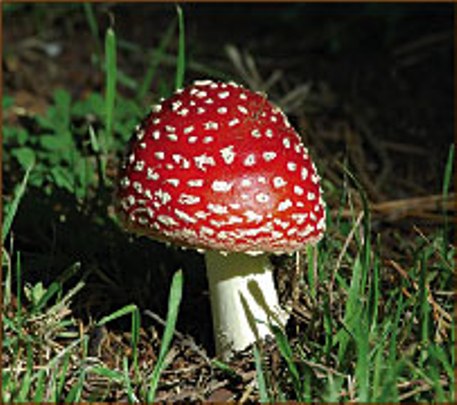'Magic' Mushrooms in Royal Garden: What Is Fly Agaric?

Hallucinogenic mushrooms are perhaps the last thing you'd expect to find growing in the Queen of England's garden.
Yet a type of mushroom called Amanita muscaria — commonly known as fly agaric, or fly amanita — was found growing in the gardens of Buckingham Palace by the producers of a television show, the Associated Press reported on Friday (Dec. 12).
A. muscaria is a bright red-and-white mushroom, and the fungus is psychoactive when consumed.
Finding these mushrooms in an English garden would be "not particularly" unusual, saidDonald Pfister, a biologist at Harvard University who studies fungi, though he added that he didn't know for certain whether the fungi in question were, indeed, A. muscaria.
The fungi are known to grow near evergreen trees. They can also grow under deciduous trees, such as birch, Pfister said.
The species is native to temperate and subarctic regions in the Northern Hemisphere, but it has also been introduced to the Southern Hemisphere. [Trippy Tales: The History of 8 Hallucinogens]
The 'shrooms are considered toxic to humans, but they have been used in religious practices for their hallucinogenic properties, especially in Siberia, according to the book "Hallucinogens and Culture" (Chandler & Sharp, 1976) by Peter T. Furst. The main psychoactive ingredient is the compound muscimol, which mimics the brain signaling chemical GABA, which inhibits neuronal activity. This results in feelings of relaxation and lessened anxiety.
Sign up for the Live Science daily newsletter now
Get the world’s most fascinating discoveries delivered straight to your inbox.
Some scientists, including Pfister, think these mushrooms were the inspiration for Santa Claus and other Christmas traditions, because Siberian shamans would give out bags of hallucinatory fungi as presents in late December. Growing under an evergreen tree, the red-and-white fungi could look like Santa's presents.
In addition, some folklorists claim that the Christmas story about flying reindeer may have been a hallucination, since reindeer — which also consume the mushrooms — are common in Siberia.
However, not all experts agree with the Santa-shamanism theory.
A. muscaria is distinct from psilocybin "magic" mushroom, (such as Psilocybe cubensis), a common recreational drug. It was outlawed in the United Kingdom in July 2005. After that, legal sales of A. muscaria began increasing, according to the European Monitoring Centre for Drugs and Drug Addiction.
Follow Tanya Lewis on Twitter. Follow us @livescience, Facebook & Google+. Original article on Live Science.











